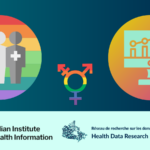CIHI to launch new standards for gender, sex & sexual orientation data


The Canadian Institute for Health Information (CIHI) is leading a groundbreaking initiative to develop pan-Canadian data standards for gender, sex and sexual orientation (GSSO) data collection. An HDRN Canada member, CIHI is developing the standards to address significant gaps in how health systems capture and use data related to the 2SLGBTQI+ community to promote health equity and ensure all Canadians receive inclusive, affirming care.
According to Shannon O’Connor, Manager of Data Standards at CIHI, the lack of standardized data collection has led to fragmented reporting and underrepresentation of gender diverse populations in health systems across Canada. “That’s why we are establishing pan-Canadian gender, sex and sexual orientation data standards, leveraging some terrific work that has been done by our partners at the British Columbia Ministry of Health.”
By ensuring the data are collected in a standardized and consistent way across the country, enabling a safe and equitable health care system for all Canadians. ~ Shannon O’Connor
The proposed standards include comprehensive data elements, definitions and value sets to ensure consistency and accuracy in how GSSO data are collected and used. For example, fields for “Name Used” and “Pronouns” will help prevent transgender and nonbinary individuals from being misgendered or deadnamed in clinical settings. The standards will align with internationally recognized standards, such as SNOMED-CT-CA, HL7 and LOINC, enabling seamless data exchange across digital health systems. The standards will continue to evolve, ensuring they include the right level of clinical information needed to provide all Canadians, including 2SLGBTQI+ individuals, with the best possible care
The new standards are built upon work done by the British Columbia Ministry of Health, whose Gender, Sex, and Sexual Orientation Health Information Standard serves as the foundation for the pan-Canadian standards. “Rather than reinvent the wheel, CIHI is leveraging a strong provincial standard and conducting the necessary engagement to ensure that it is fit for use at a pan-Canadian level,” O’Connor noted. CIHI consulted with stakeholders from across the country, including provinces and territories, federal government partners, Indigenous communities, clinicians, researchers and individuals with lived experience. “We’ve engaged directly with members of the 2SLGBTQI+ communities as part of the standards development process,” she continued. “Their input has been invaluable in ensuring that the standards reflect lived experiences and meet the unique needs of these populations.”
The development of the new standards is a significant step forward in addressing inequities faced by 2SLGBTQI+ individuals in the health care system. Many digital health systems in Canada currently lack the capacity to collect GSSO information beyond a single, conflated field, making it difficult to measure disparities or assess the impact of interventions designed to address them, O’Connor said. “Without pan-Canadian standards, gender, sex and sexual orientation information will continue to be collected in a fragmented and non-standardized way across Canada, and 2SLGBTQI+ individuals will continue to be underrepresented. By ensuring the data are collected in a standardized and consistent way across the country, enabling a safe and equitable health care system for all Canadians.”
The proposed standards are included in CIHI’s Pan-Canadian Health Data Content Framework, released in September 2024, and are expected to be finalized as a standalone standard by spring 2025. “These standards will support gender-affirming care and communication across the health care system,” O’Connor said. “By measuring the inequities that exist within the health care system, we can help ensure we are taking the steps necessary to address them in order to improve health care for all Canadians.”
